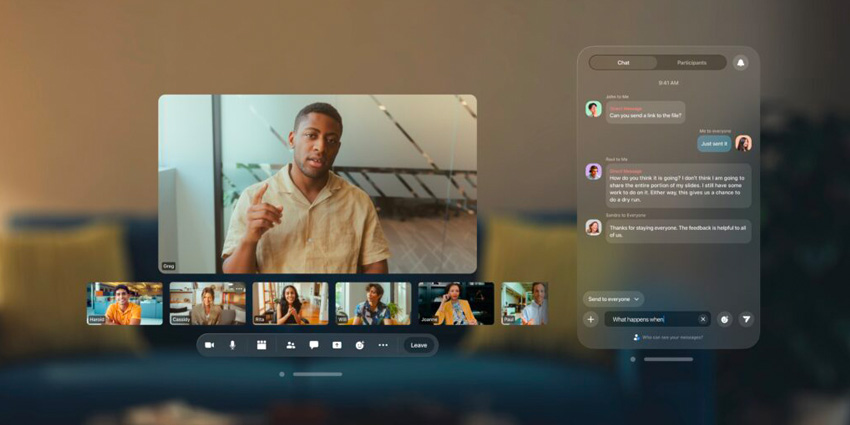Over the last couple of years, extended reality has grown to become an increasingly mainstream part of our world. We’re using virtual reality to enhance collaboration, and augmented reality to connect with customers. Mixed reality solutions are even paving the way to the promise of teleportation.
When the pandemic changed the way countless companies operate, XR even emerged as a solution to transform the way we travel. For travel companies, XR promises an opportunity to reconnect with customers, help them make better purchasing decisions, and provide better overall experiences.
The question is, how do you build a business case for XR in travel that earns the support and buy-in of all your stakeholders and leaders? The following steps could help.
Step 1: Consider Customer Needs
One of the easiest ways to build a sustainable business case for a new technology in today’s CX-focused landscape, is to highlight how the right innovation can help you better serve your customers. Confidence in travel companies is lower than ever since the pandemic, and relationships with customers have dwindled as a result of limited options for expeditions.
With XR, travel companies can overcome some of the roadblocks causing issues with customer experience. For instance, AR apps can help your customers book, prepare, and travel more effectively. KLM’s AR app helps customers check their luggage will fit in baggage compartments in their planes before they start travelling to the airport.
VR and MR apps can give customers an idea of what a travel experience might be like, by giving them a chance to explore a plane or boat. The right solutions can even be implemented as in-flight entertainment, as way to reduce anxiety and nerves before a flight.
When exploring new destinations, XR solutions can also help travel companies to offer a more consistent level of service. AR apps can help customers to find their way to locations and get instant translations for street signs. Beacon technology can provide users with access to unique information and guidance when they attend a specific attraction. The options are endless.
Step 2: Look for Ways to Support Sales and Marketing
When building a business case for new technology like XR in travel, it’s important to be able to convey a potential “ROI” (Return on Investment). One of the major ways XR solutions can improve returns, is by increasing the number of would-be customers you can convert.
Today’s consumers are understandably concerned about spending their hard-earned money on travel opportunities, in an uncertain environment. One way to get them more excited about a potential experience, is to allow them to have a taste of the destination or tour before they visit the location. VR is a fantastic tool for this purpose. It can help travel companies to assist customers in choosing the right destinations, or planning their itinerary for a trip.
The same tools can provide tours around hotels, and give users an idea of what they can expect if they sign up to certain events, like helicopter rides. With extra tools like haptic feedback, temperature control, and spatial sound, it’s possible to make people feel as though they’re really standing in a different part of the world.
Remember, customers can be up to 130% more likely to book a hotel room after having a virtual tour of the location.
Step 3: Explore New Avenues for Travel
With fewer people booking big vacations and trips, partially out of anxiety, and partially as a result of limited budgets, travel companies need to find more experiences to sell. In 2020, one interesting option emerged in the form of “virtual travel” – a VR-based solution giving people the ability to visit destinations temporarily.
Although virtual tourism, or “armchair travel” might not replace the desire to visit new locations in-person entirely, it could offer a unique option for travel companies to expand their services. This is particularly true during a time when overtourism and sustainability are becoming a concern.
Travel companies could offer powerful virtual travel experiences as a kind of “day trip” for their customers, to give them more ways of exploring the world. Alternatively, you could look into the option to improve average lifetime value among customers, by adding to real-world experiences. Beacons and 5G technology are opening the door to more powerful hybrid travel experiences.
The right solutions can allow customers to scan QR codes and get instant access to unique AR events and games while they’re exploring a location. Those same tools could provide a more “premium” hotel or tour experience.
Step 4: Open the Door for Innovation
Increasingly, consumers are on the hunt for companies capable of offering them something new, exciting, and transformative. This is particularly true in the age of the metaverse, where people are becoming more interested in the connection between the real and digital worlds. With XR solutions, travel companies could open new doors for discovery in the metaverse, with tickets to virtual events, otherworldly tours and more.
When building a business case for XR in travel, it’s worth thinking about the technologies you might want to embrace in the future, as well as today. The rise of XR tools and applications not only provides new ways to excite and delight customers, but also valuable opportunities for business productivity. The right tools can help teams work more effectively together to come up with new ideas for tours and excursions, wherever they are.
Intelligent tools built into XR environments can also help brands to collect valuable information about customers and what they want from their travel experiences. Everything from eye tracking technology to AI pattern detection could pave the way for new insights into travel opportunities.







